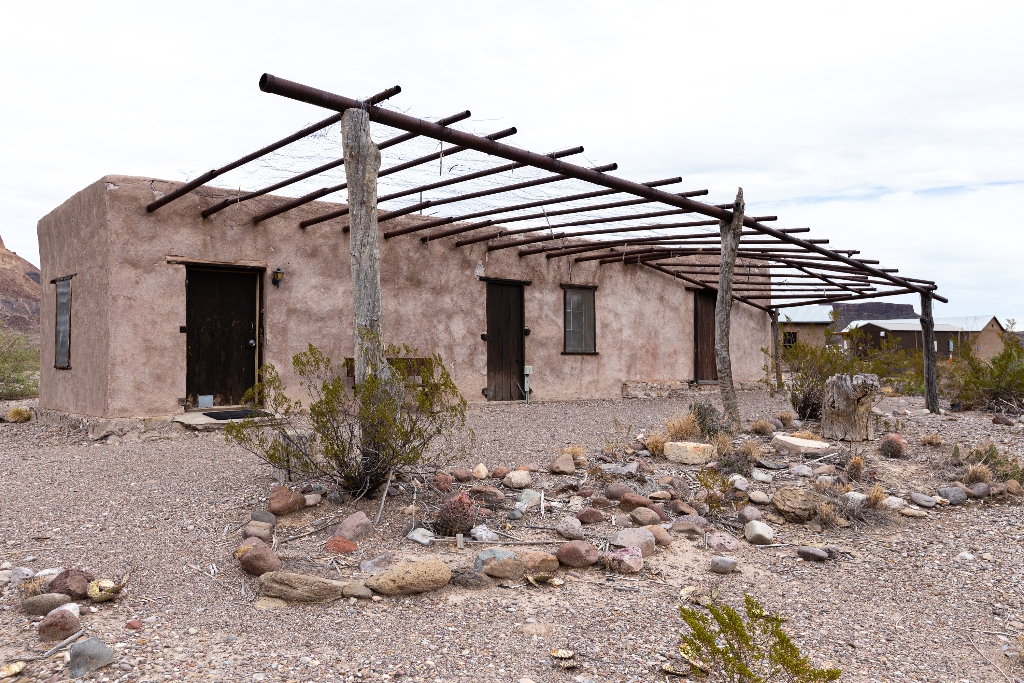
The buildings at Castolon are a remnant of Big Bend's pioneer and military history. Castolon experienced a rich cross-cultural mingling, as the Hispanic culture was a melding of Spanish and indigenous peoples of the region. Anglo-American settlers later entered the area, learning survival methods from the previous settlers and forming a bicultural community with the Mexican settlers. These rural families in Big Bend survived in a harsh landscape, compounded by the Mexican Revolution that began in 1910. During this time, bandits from Mexico took advantage of the chaos to raid small border communities, causing some families on both sides of the Rio Grande to abandon their homes.
A raid on Glenn Springs in 1916 convinced the War Department that federal intervention was necessary for the safety of border communities. Thousands of soldiers were dispatched throughout the Big Bend area. Camp Santa Helena was established at present-day Castolon by U.S. Army troops of the 5th, 6th and 8th cavalries. Initially a series of tents, work began on a permanent post in 1919, with the first structures completed in 1920. The Mexican Revolution ended in late 1920 and the troops were reassigned elsewhere. The newly completed buildings saw minimal military use. In 1925, La Harmonia Company purchased the abandoned military buildings. La Harmonia Store was moved into the barracks building and an official post office was added to the store's services. The post office closed in 1954. La Harmonia Company was vital to the existence of individual ranchers and the farming families living in the remote villages of Castolon, La Coyota, El Ojito, and Terlingua de Abajo. The store remained in business until 1961, when La Harmonia Company holdings were incoporated into Big Bend National Park.
Tragedy struck on May 22, 2019, when a fire in Mexico to jumped the Rio Grande. With temperatures around 110 degrees Fahrenheit, the fire spread quickly and showered embers on the shade structures of La Harmonia Store and the historic latrine. Despite valient efforts, structural and wildland fire crews could not safely extinguish the fire before both buildings suffered extensive damage. Luckily, firefighters saved many other buildings, artifacts, vital utilities, and nearby Cottonwood Campground. Although damaged, the buildings remain a rich remnant of Big Bend's pioneer and military past. The National Park Service is consulting with adobe experts, historic architects, and structural engineers to determine whether these structures can be salvaged or rehabilitated. A temporary restroom and concession was added to the area. The visitor center is now housed in the historic Garlick House.
A raid on Glenn Springs in 1916 convinced the War Department that federal intervention was necessary for the safety of border communities. Thousands of soldiers were dispatched throughout the Big Bend area. Camp Santa Helena was established at present-day Castolon by U.S. Army troops of the 5th, 6th and 8th cavalries. Initially a series of tents, work began on a permanent post in 1919, with the first structures completed in 1920. The Mexican Revolution ended in late 1920 and the troops were reassigned elsewhere. The newly completed buildings saw minimal military use. In 1925, La Harmonia Company purchased the abandoned military buildings. La Harmonia Store was moved into the barracks building and an official post office was added to the store's services. The post office closed in 1954. La Harmonia Company was vital to the existence of individual ranchers and the farming families living in the remote villages of Castolon, La Coyota, El Ojito, and Terlingua de Abajo. The store remained in business until 1961, when La Harmonia Company holdings were incoporated into Big Bend National Park.
Tragedy struck on May 22, 2019, when a fire in Mexico to jumped the Rio Grande. With temperatures around 110 degrees Fahrenheit, the fire spread quickly and showered embers on the shade structures of La Harmonia Store and the historic latrine. Despite valient efforts, structural and wildland fire crews could not safely extinguish the fire before both buildings suffered extensive damage. Luckily, firefighters saved many other buildings, artifacts, vital utilities, and nearby Cottonwood Campground. Although damaged, the buildings remain a rich remnant of Big Bend's pioneer and military past. The National Park Service is consulting with adobe experts, historic architects, and structural engineers to determine whether these structures can be salvaged or rehabilitated. A temporary restroom and concession was added to the area. The visitor center is now housed in the historic Garlick House.
Is there something we missed for this itinerary?
Itineraries across USA

Acadia

Arches National Park

Badlands

Big Bend

Biscayne

Black Canyon Of The Gunnison

Bryce Canyon

Canyonlands

Capitol Reef

Carlsbad Caverns

Channel Islands

Congaree

Crater Lake

Cuyahoga Valley

Death Valley

Dry Tortugas

Everglades

Gateway Arch

Glacier

Grand Canyon

Grand Teton

Great Basin

Great Smoky Mountains

Guadalupe Mountains

Haleakalā

Hawaiʻi Volcanoes

Hot Springs

Indiana Dunes

Isle Royale

Joshua Tree

Kenai Fjords

Kobuk Valley

Lassen Volcanic

Mammoth Cave

Mesa Verde

Mount Rainier

North Cascades

Olympic

Petrified Forest

Pinnacles

Rocky Mountain

Saguaro

Shenandoah

Theodore Roosevelt

Virgin Islands

Voyageurs

White Sands

Wind Cave

Yellowstone

Yosemite

Zion